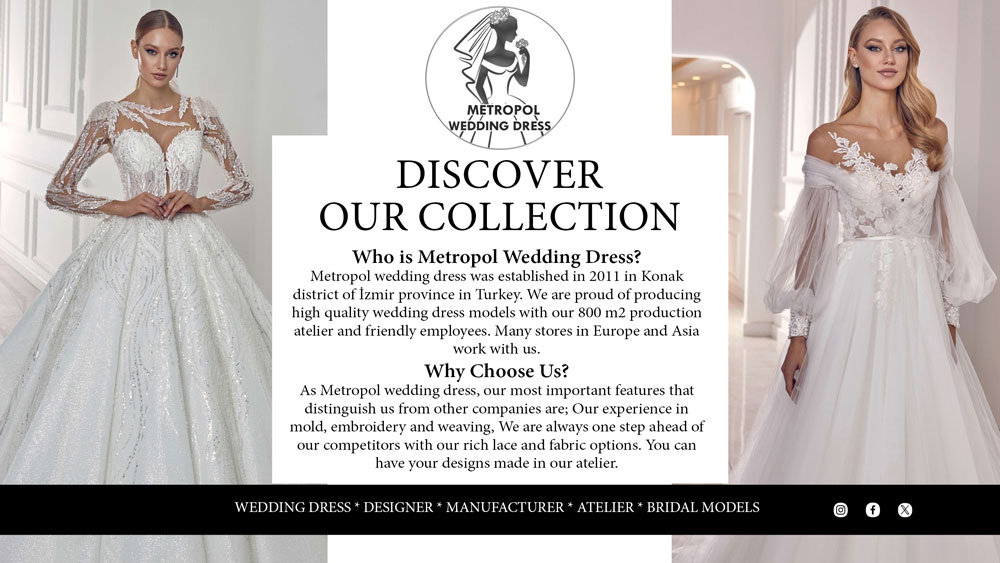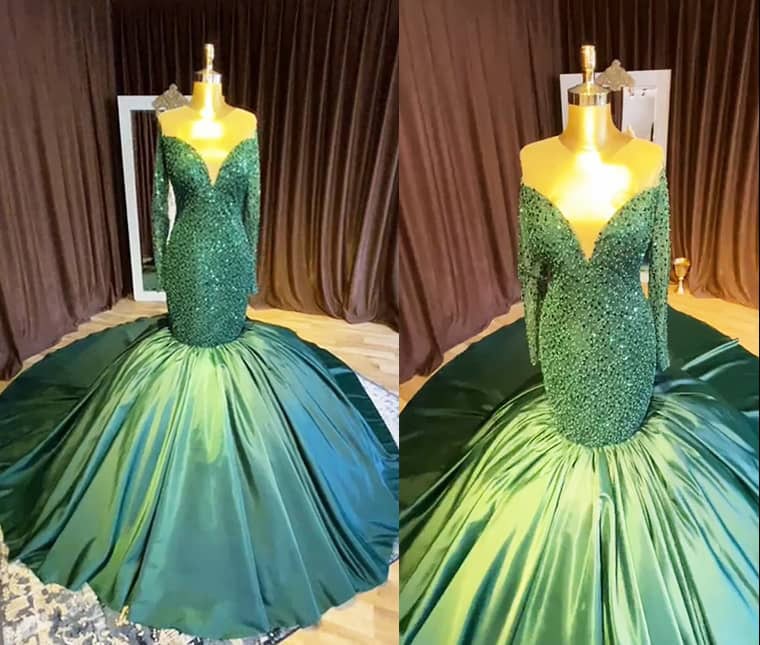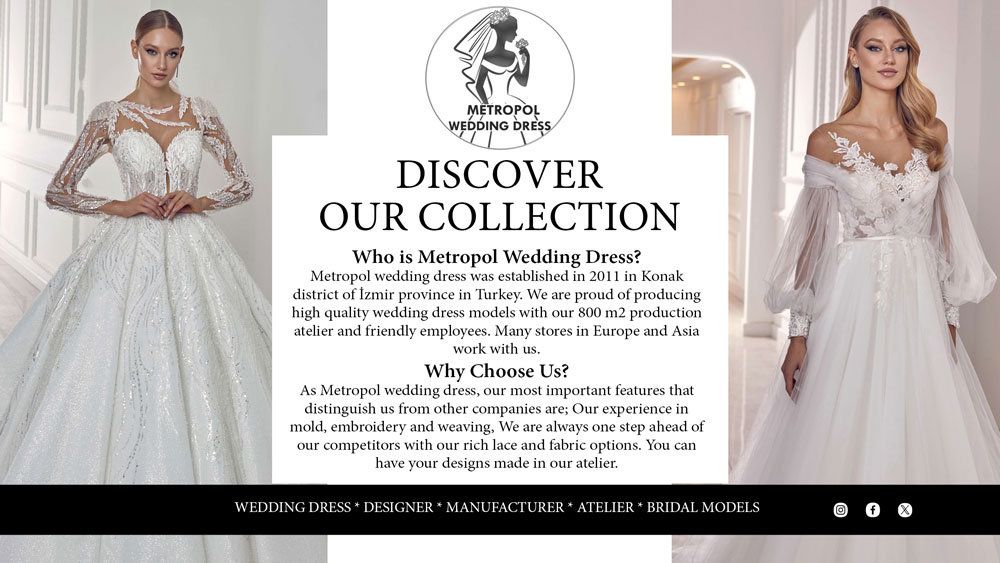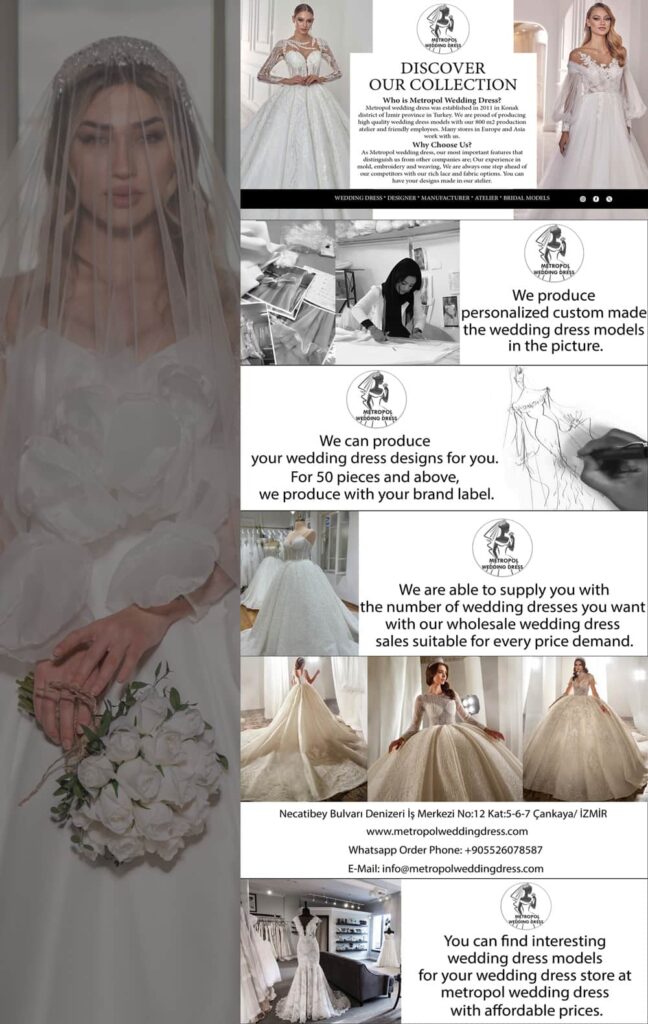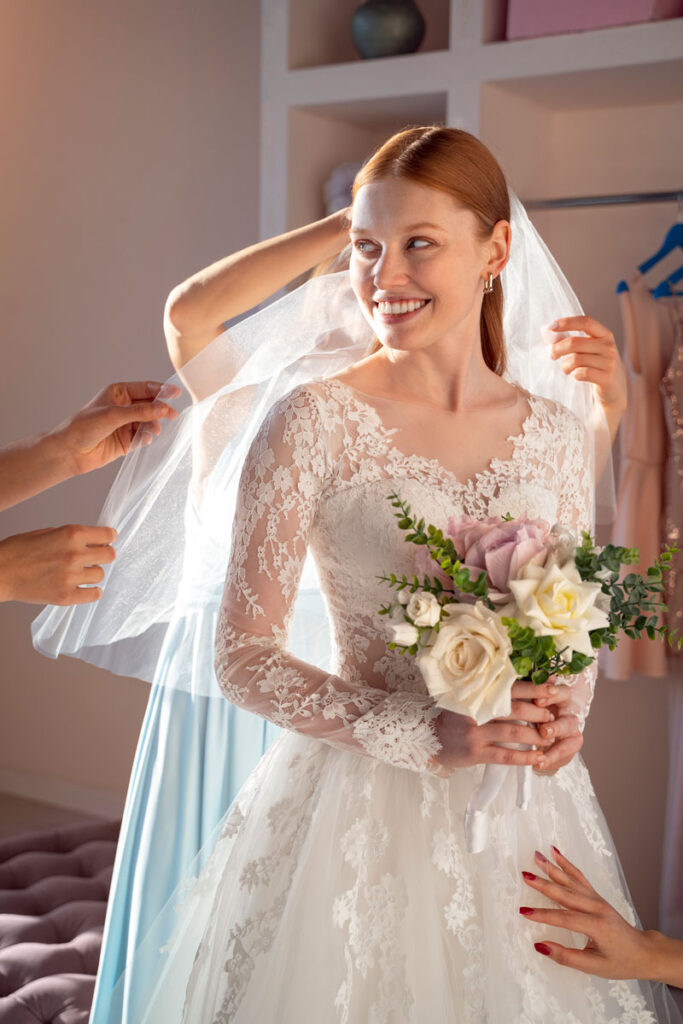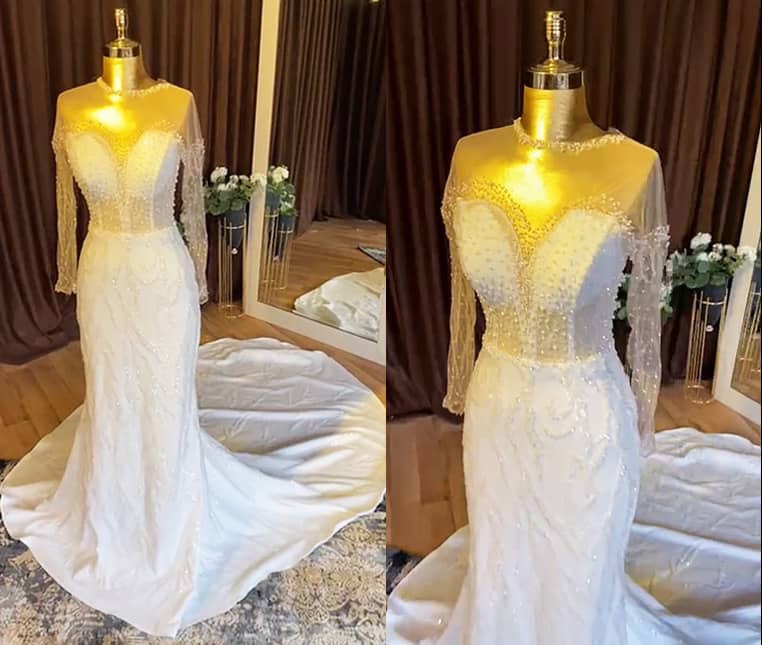
Royal Bridal House Best 4 Finding the right wedding dress can be an exciting yet daunting task. Here are some steps to help you determine which dress is right for you:
Know Your Body Type: Understand your body shape and what styles tend to flatter it. For instance, if you have an hourglass figure, you might look great in a mermaid or trumpet style gown. If you’re petite, you might want to avoid overwhelming ball gowns.
Consider Your Personal Style: Think about what type of clothing makes you feel confident and beautiful in your everyday life. Do you prefer classic, romantic, modern, or bohemian styles? Your wedding dress should reflect your personal style and make you feel like the best version of yourself.
Set a Budget: Determine how much you’re willing to spend on your wedding dress. Setting a budget will help narrow down your options and prevent you from falling in love with a dress that’s way out of your price range.
Research: Look for inspiration online through bridal magazines, Pinterest, and wedding dress websites. Save images of dresses that catch your eye and make note of the designers you like.
Try On Different Styles: Be open to trying on different silhouettes and styles, even ones you may not have considered initially. What looks good on a hanger may not necessarily look good on your body, and vice versa.
Listen to Your Instincts: Pay attention to how you feel when you try on a dress. Does it make you feel beautiful and confident? Can you envision yourself walking down the aisle in it? Trust your instincts and choose the dress that makes you feel the happiest.
Consider the Venue and Season: Take into account the location and time of year of your wedding. A heavy, long-sleeved gown might not be the best choice for a beach wedding in the summer, while a lightweight, flowy dress would be perfect.
Bring Supportive Friends or Family: Bring along a few trusted friends or family members whose opinions you value and who will support you in finding the perfect dress. However, ultimately, the decision should be yours.
Don’t Settle: Don’t feel pressured to say yes to a dress just because everyone else loves it or because it’s on sale. This is your special day, and you deserve to wear a dress that makes you feel amazing.
Get Professional Alterations: Once you’ve found your dream dress, make sure it fits you perfectly by getting professional alterations. A well-fitted dress can make all the difference in how you look and feel on your wedding day. Royal Bridal House
Remember, the most important thing is to choose a dress that makes you feel confident, beautiful, and like the best version of yourself. Trust your instincts, and enjoy the process of finding your dream wedding dress!
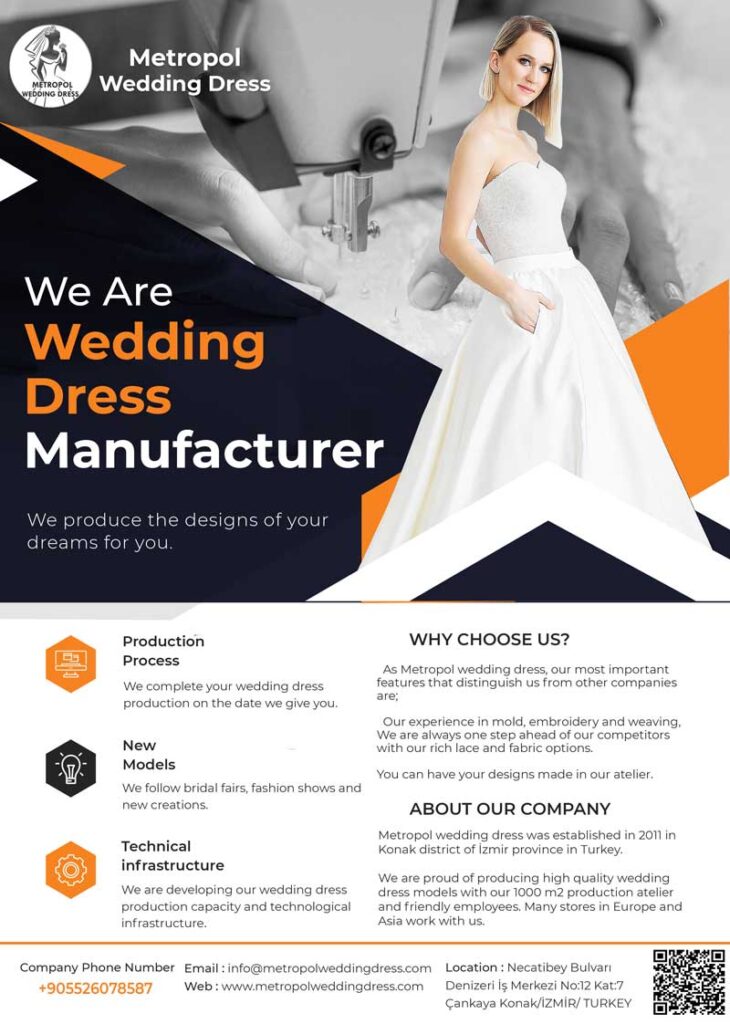
Royal Bridal House
Selecting your wedding dress is a deeply personal process, and there’s no one-size-fits-all answer. However, here’s a step-by-step guide to help you navigate the process:
Start Early: Begin shopping for your wedding dress at least 9-12 months before your wedding date. This will give you plenty of time to find the perfect dress, as well as time for alterations.
Set a Budget: Determine how much you’re willing to spend on your wedding dress, including alterations and accessories. This will help narrow down your options and prevent you from falling in love with a dress that’s out of your price range.
Do Your Research: Look for inspiration online, in bridal magazines, and on social media platforms like Pinterest and Instagram. Save images of dresses that catch your eye and make note of designers and styles you like.
Consider Your Venue and Theme: Take into account the style and formality of your wedding venue, as well as any themes or color schemes you’ve chosen for your wedding. Your dress should complement the overall vibe of your wedding.
Know Your Body Type: Understand your body shape and what styles tend to flatter it. For example, if you have an hourglass figure, you might look great in a mermaid or trumpet style gown, while an A-line silhouette is flattering on many body types.
Shop at Reputable Bridal Salons: Schedule appointments at bridal boutiques or salons that carry a variety of designers and styles. Bring along a few trusted friends or family members for support and feedback.
Try on Different Styles: Be open to trying on different silhouettes and styles, even ones you may not have considered initially. What looks good on a hanger may not necessarily look good on your body, and vice versa.
Trust Your Instincts: Pay attention to how you feel when you try on a dress. Does it make you feel beautiful, confident, and like the best version of yourself? Trust your instincts and choose the dress that makes you feel the happiest.
Consider Alterations: Keep in mind that most wedding dresses will require alterations to achieve the perfect fit. Factor in the cost and timeline for alterations when making your decision.
Don’t Settle: Don’t feel pressured to say yes to a dress just because everyone else loves it or because it’s on sale. This is your special day, and you deserve to wear a dress that makes you feel amazing.
Celebrate Your Decision: Once you’ve found your dream dress, celebrate your decision! You’ve found the perfect gown to wear on one of the most important days of your life.
Remember, the most important thing is to choose a dress that makes you feel confident, beautiful, and like the best version of yourself. Enjoy the process of finding your dream wedding dress!
What to look for when buying a wedding dress
When buying a wedding dress, there are several key factors to consider to ensure you find the perfect gown for your special day:
Comfort: Your wedding day will be long and eventful, so comfort is key. Look for a dress that not only looks stunning but also feels comfortable to wear for an extended period. Consider factors such as the weight of the fabric, the fit of the dress, and the ease of movement.
Style and Silhouette: Choose a dress silhouette that flatters your body type and accentuates your best features. Whether you opt for a ball gown, mermaid, A-line, sheath, or empire waist dress, make sure it reflects your personal style and makes you feel confident and beautiful.
Quality of Fabric: Pay attention to the quality of the fabric used in the dress. High-quality fabrics such as silk, satin, chiffon, and lace will not only look more luxurious but will also drape better and be more comfortable to wear. Royal Bridal House
Details and Embellishments: Consider the details and embellishments on the dress, such as beading, embroidery, lace appliques, and sequins. Make sure they complement your overall wedding theme and style without overwhelming the dress or detracting from your natural beauty.
Alteration Potential: Keep in mind that most wedding dresses will require alterations to achieve the perfect fit. Choose a dress that can be easily altered to accommodate any changes in your body shape or size leading up to the wedding day.
Budget: Set a budget for your wedding dress and stick to it. Consider not only the cost of the dress itself but also any additional expenses such as alterations, accessories, and shipping fees.
Timeframe: Start shopping for your wedding dress early to allow plenty of time for fittings, alterations, and any unexpected delays. Most bridal boutiques recommend ordering your dress at least 9-12 months before your wedding date.
Venue and Season: Take into account the location and time of year of your wedding when choosing your dress. A heavy, long-sleeved gown might not be suitable for a summer beach wedding, while a lightweight, sleeveless dress might not be warm enough for a winter wedding.
Body Shape: Consider your body shape and what styles tend to flatter it. For example, if you have an hourglass figure, you might look great in a mermaid or trumpet style gown, while an A-line silhouette is flattering on many body types.
Trust Your Instincts: Ultimately, trust your instincts and choose the dress that makes you feel the most beautiful, confident, and like the best version of yourself. Don’t settle for a dress that doesn’t make you feel absolutely amazing on your special day.
Wedding dress Istanbul
Istanbul, with its rich cultural heritage and diverse fashion scene, offers a plethora of options for wedding dresses. Whether you’re looking for traditional Turkish designs or contemporary styles, Istanbul’s bridal boutiques and designers can cater to a variety of tastes and preferences. Some renowned bridal shops in Istanbul include Pronovias, Tarik Ediz, and Atelier Rebul. Additionally, exploring the bustling streets of Istanbul’s neighborhoods like Nisantasi and Kadikoy might lead you to hidden gems and local designers creating stunning wedding gowns. If you’re in Istanbul, visiting these boutiques and exploring the city’s bridal fashion scene firsthand can be an exciting and rewarding experience!
What makes a wedding dress look expensive
Several factors can contribute to making a wedding dress look expensive:
Quality of Fabric: High-quality fabrics such as silk, satin, lace, and chiffon can instantly elevate the look of a wedding dress. These fabrics not only feel luxurious but also drape beautifully and have a rich texture that adds to the overall elegance of the gown.
Intricate Details and Embellishments: Fine craftsmanship and intricate detailing can make a wedding dress look more expensive. This includes delicate beadwork, hand-sewn embroidery, lace appliques, sequins, crystals, and pearls, which add depth and dimension to the dress.
Designer Label: Wedding dresses from well-known and reputable designers often come with a higher price tag. Designer gowns are typically crafted with premium materials and attention to detail, and they may feature unique designs and signature elements that set them apart.
Customization and Personalization: Custom-made or personalized wedding dresses are often more expensive due to the extra time, effort, and craftsmanship involved. These dresses are tailored to fit the bride’s exact measurements and may include special design elements or modifications to suit her preferences.
Complex Construction: Wedding dresses with intricate construction and design elements, such as corset bodices, intricate draping, layered skirts, and dramatic trains, can appear more expensive due to the skill and craftsmanship required to create them.
Couture Techniques: Couture techniques, such as hand-sewn seams, boning, and structural support, are often used in high-end wedding dresses to ensure a perfect fit and silhouette. These techniques require precision and expertise, adding to the overall cost of the gown. Royal Bridal House
Luxurious Finishing Touches: Finishing touches such as covered buttons, invisible zippers, silk linings, and hand-finished hems can give a wedding dress a polished and refined look that exudes luxury and sophistication.
Exclusivity: Limited edition or one-of-a-kind wedding dresses may command a higher price due to their exclusivity and rarity. These dresses are often made in small quantities or are custom-designed for individual brides, making them highly sought after and valuable.
Packaging and Presentation: The presentation of the wedding dress, including the packaging, garment bag, and accompanying accessories, can also influence its perceived value. Luxury brands often pay attention to every detail, including the packaging, to create a memorable and premium experience for the bride.
Overall, a combination of fine craftsmanship, premium materials, intricate details, and personalized touches can make a wedding dress look expensive and luxurious. However, it’s important to remember that the true value of a wedding dress lies in how it makes the bride feel on her special day, regardless of its price tag.
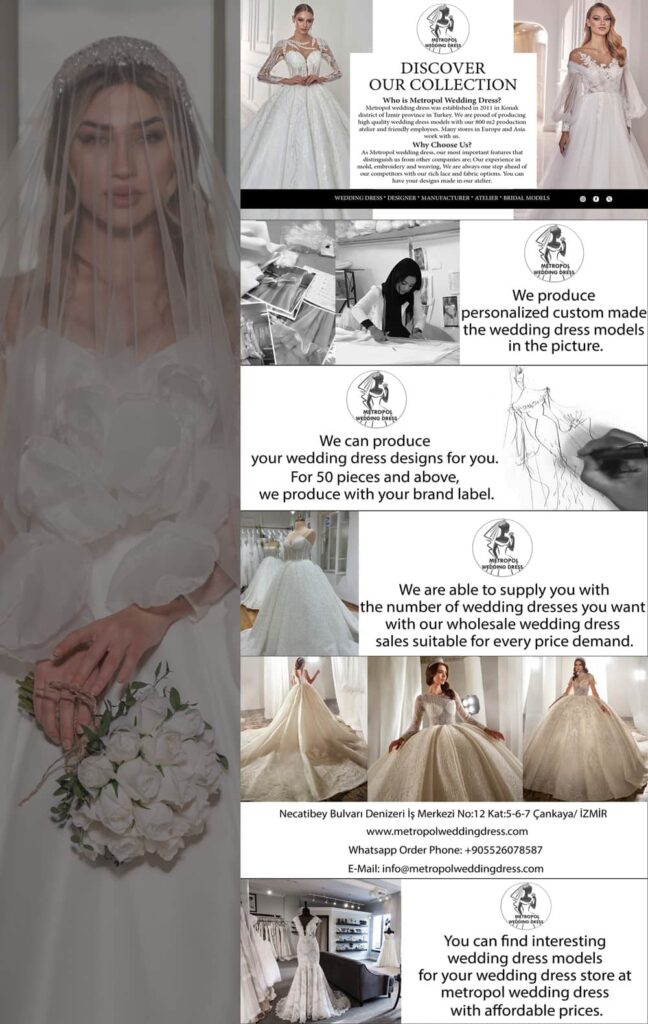
royal bridal look
A royal bridal look often embodies elegance, sophistication, and timeless beauty. Here are some key elements commonly associated with a royal bridal ensemble:
- Regal Silhouette: Royal brides often opt for classic silhouettes such as ball gowns or A-line dresses that exude grace and grandeur. These dresses typically feature luxurious fabrics like silk satin or lace and may include intricate detailing such as beadwork, embroidery, or delicate appliqués.
- Exquisite Embellishments: Embellishments play a significant role in achieving a royal bridal look. This can include Swarovski crystals, pearls, sequins, or handcrafted embroidery, adding opulence and richness to the gown.
- Long Veil: A long, flowing veil is a quintessential accessory for a royal bride. Whether it’s a cathedral-length veil adorned with lace or a simple tulle veil, it adds drama and romance to the bridal ensemble.
- Statement Accessories: Royal brides often incorporate statement accessories to elevate their look. This could include a tiara, a diamond-encrusted headpiece, or heirloom jewelry passed down through generations.
- Elegant Hairstyle and Makeup: A royal bridal look is polished and refined, often featuring a classic hairstyle such as a chignon or soft curls, complemented by natural, radiant makeup that enhances the bride’s features without overpowering them.
- Traditional or Modern Twist: While royal brides typically adhere to certain traditions and protocols, they may also incorporate modern elements into their bridal attire to reflect their personal style and contemporary trends.
- Attention to Detail: Every aspect of a royal bridal ensemble is meticulously planned, from the fit of the dress to the choice of accessories, ensuring that every detail contributes to the overall elegance and sophistication of the look.
Whether inspired by the timeless elegance of Grace Kelly or the modern sophistication of Meghan Markle, a royal bridal look is designed to make the bride feel like royalty on her special day.
What is the best month to buy a wedding dress
The best month to buy a wedding dress can vary depending on several factors, including your wedding date, budget, and personal preferences. However, here are a few considerations to help you decide:
Sample Sales: Many bridal boutiques hold sample sales at various times throughout the year to clear out their inventory and make room for new collections. Sample sales can be a great opportunity to find designer wedding dresses at discounted prices. These sales often occur in late fall or early winter and again in late spring or early summer.
Off-Season Discounts: Consider purchasing your wedding dress during the off-season for weddings, typically in the winter months (January and February) or late summer (August). During these times, bridal shops may offer discounts and promotions to attract customers during slower periods.
New Collections: Bridal designers typically release their new collections twice a year, in the spring and fall. If you want to have access to the latest styles and designs, consider shopping during these times. However, keep in mind that prices for new collections may be higher than those for older styles or samples.
Avoiding Peak Wedding Season: Wedding season typically peaks in the spring and summer months, with many weddings taking place from May to August. If your wedding date falls within this period, you may want to shop for your dress well in advance to ensure you have enough time for fittings and alterations. However, if you’re flexible with your wedding date, consider purchasing your dress during the quieter months when bridal shops may be less crowded and more willing to negotiate prices. Royal Bridal House
Ultimately, the best month to buy a wedding dress depends on your individual circumstances and preferences. It’s a good idea to start shopping for your dress at least 9-12 months before your wedding date to allow plenty of time for fittings, alterations, and any unexpected delays. Regardless of when you choose to buy your dress, the most important thing is to find a gown that makes you feel beautiful, confident, and like the best version of yourself on your special day.
royal bridal gowns
Royal bridal gowns have a long history of setting trends and captivating the world with their elegance and grandeur. Here are some iconic examples:
- Kate Middleton’s Alexander McQueen Gown (2011): Designed by Sarah Burton for Alexander McQueen, Kate Middleton’s wedding dress featured a lace bodice with long sleeves, a V-neckline, and a full skirt with intricate lace appliqués. The dress exuded timeless elegance and was inspired by the Victorian tradition of corsetry.
- Grace Kelly’s Helen Rose Gown (1956): Grace Kelly’s wedding dress, designed by Helen Rose, was the epitome of classic glamour. The dress featured a high neckline, long sleeves, and a full skirt made of silk taffeta and adorned with lace. The gown’s iconic look has inspired brides for generations.
- Meghan Markle’s Givenchy Gown (2018): Meghan Markle’s wedding dress, designed by Clare Waight Keller for Givenchy, was a modern take on royal elegance. The minimalist gown featured a bateau neckline, three-quarter sleeves, and a sculpted waist, with a dramatic train cascading behind her. The simplicity of the design allowed Meghan’s natural beauty to shine through.
- Princess Diana’s Emmanuel Gown (1981): Princess Diana’s wedding dress, designed by David and Elizabeth Emanuel, was a fairytale creation with its voluminous skirt, puffed sleeves, and intricate lace detailing. The dress featured a 25-foot train, making it one of the longest in royal history.
- Queen Victoria’s Wedding Gown (1840): Queen Victoria’s wedding dress set the standard for royal bridal attire in the 19th century. Made of white silk satin and Honiton lace, the gown was adorned with orange blossom motifs, symbolizing fertility and purity. Queen Victoria’s choice of a white wedding dress also popularized the color for brides across Europe and North America.
These iconic royal bridal gowns have left a lasting legacy in the world of fashion and continue to inspire brides seeking a regal and timeless look for their own weddings.
Can I try on wedding dresses by myself
While trying on wedding dresses by yourself is technically possible, it’s not ideal for several reasons:
Need for Assistance: Wedding dresses are often intricate garments with multiple layers, delicate fabrics, and complex closures. Having someone to help you zip up the dress, adjust the train, or fasten buttons can make the process much smoother.
Objective Feedback: Having a trusted friend, family member, or bridal consultant present during your dress fitting can provide valuable feedback and support. They can offer opinions on how the dress looks, provide suggestions for accessories, and offer emotional support during the decision-making process.
Safety: Some wedding dresses can be heavy or cumbersome, especially if they have a long train or voluminous skirt. Having someone nearby to assist you can help prevent accidents or mishaps while trying on the dress.
Experience: Bridal consultants at wedding dress boutiques are trained to help brides find the perfect dress. They can provide expert advice on which styles flatter your body type, suggest alterations to achieve the perfect fit, and guide you through the entire dress selection process.
If you find yourself in a situation where you need to try on wedding dresses by yourself, here are a few tips to make the process easier:
southern bridal boutique
Southern bridal boutiques often capture the charm and hospitality of the region while offering a curated selection of wedding dresses and accessories. Here are some characteristics you might find in a southern bridal boutique:
- Warm Hospitality: Southern hospitality is a hallmark of these boutiques. Expect friendly and attentive service from staff who are dedicated to helping you find the perfect dress for your special day.
- Southern-Inspired Designs: Many southern bridal boutiques feature wedding dresses that reflect the romantic and relaxed aesthetic of the South. You may find dresses with lace, floral appliqués, or other delicate details that evoke the region’s natural beauty.
- Variety of Styles: While southern bridal boutiques may have a signature aesthetic, they typically offer a diverse range of styles to suit every bride’s taste. Whether you’re looking for a classic ball gown, a bohemian sheath dress, or a modern jumpsuit, you’re likely to find options that appeal to you.
- Attention to Detail: From the decor of the boutique to the presentation of the dresses, southern bridal boutiques often pay attention to the little details that make the shopping experience memorable. You can expect beautifully decorated dressing rooms and thoughtful touches that add to the overall ambiance.
- Personalized Service: Southern bridal boutiques prioritize personalized service, taking the time to understand each bride’s vision and preferences. Whether you’re shopping for your dream dress or accessories to complete your look, you can expect knowledgeable staff who are dedicated to helping you feel confident and beautiful on your wedding day.
- Community Connection: Many southern bridal boutiques are deeply rooted in their local communities, often participating in bridal shows, charity events, and other activities that bring brides-to-be together. These connections can create a sense of belonging and support as you prepare for your wedding.
Whether you’re a southern belle looking for a dress that captures the essence of your region or a bride from afar drawn to the charm of southern hospitality, a southern bridal boutique can be a wonderful place to find your dream wedding gown.
Choose dresses with simple silhouettes and easy-to-fasten closures to minimize the need for assistance.
Use mirrors strategically to see how the dress looks from all angles.
Take photos or videos of yourself in each dress to review later and get a better sense of how it looks.
Consider scheduling a separate appointment with a bridal consultant or seamstress to get professional advice and assistance.
Ultimately, while trying on wedding dresses by yourself is possible, it’s generally recommended to have someone with you to help make the experience more enjoyable and productive.
Who is supposed to buy your wedding dress
Traditionally, the bride’s family or the bride herself is expected to purchase the wedding dress. However, modern practices vary widely, and the responsibility for buying the wedding dress may fall on different parties depending on cultural norms, personal preferences, and financial arrangements. Here are a few common scenarios:
Bride’s Family: In many cultures and traditions, the bride’s family traditionally covers the cost of the wedding dress as part of their contributions to the wedding expenses. Royal Bridal House
Bride: Some brides choose to buy their own wedding dress, particularly if they have a specific style or designer in mind that they want to wear for their special day. This may be the case if the bride has a separate source of income or savings to finance the dress.
Groom or Partner: In some cases, the groom or partner may offer to pay for the wedding dress as a gesture of love and support. This can be a meaningful way for them to contribute to the wedding planning process and share in the excitement of choosing the dress.
Joint Contribution: Many couples today choose to share the cost of wedding expenses, including the wedding dress. This collaborative approach allows both partners to have a say in the decision-making process and helps distribute the financial burden more evenly.
Other Family Members or Friends: In some cases, other family members or friends may offer to contribute towards the cost of the wedding dress as a gift to the bride. This can be a generous gesture that helps alleviate some of the financial pressure associated with wedding planning.
Ultimately, there are no hard and fast rules about who should buy the wedding dress. It’s up to the individuals involved to discuss their preferences, financial situation, and expectations openly and come to a decision that works best for everyone involved. The most important thing is to choose a dress that makes the bride feel beautiful, confident, and happy on her special day, regardless of who pays for it.
Nova bella bridal Abdi ipekci showroom
As of my last update in January 2022, there isn’t specific information available about a bridal boutique named “Nova Bella Bridal” located in the Abdi Ipekci showroom in Istanbul. However, it’s possible that the boutique has been established after my last update, or it may be a boutique that caters to a local or niche market.
If you’re looking for bridal boutiques in Istanbul, you might want to explore well-known bridal districts such as Nisantasi or Kadikoy, where you can find a variety of bridal shops and showrooms offering a wide range of wedding dresses and accessories. Additionally, conducting an online search or reaching out to local wedding planning resources in Istanbul may provide more information about bridal boutiques in the area, including Nova Bella Bridal if it exists.
How to choose hair style for wedding dress
Choosing the right hairstyle to complement your wedding dress is an essential part of completing your bridal look. Here are some tips to help you select the perfect hairstyle:
Consider Your Dress Style: The style and neckline of your wedding dress can influence your hairstyle choice. For example, if your dress has intricate details on the bodice or a high neckline, you may want to opt for an updo to showcase these features. A strapless or sweetheart neckline dress can be beautifully complemented by a variety of hairstyles, from updos to loose waves.
Match the Overall Theme: Consider the overall theme and vibe of your wedding when choosing your hairstyle. If you’re having a formal, black-tie affair, a sleek updo or classic chignon may be more appropriate. For a bohemian or rustic wedding, loose, tousled waves or a romantic half-up, half-down style could be a better fit.
Take Your Hair Type Into Account: Your natural hair type and texture should also play a role in your hairstyle choice. If you have thick, curly hair, you may want to embrace your natural texture with a romantic curly updo or loose waves. If you have fine hair, consider adding volume with extensions or opting for a hairstyle that incorporates braids or twists. Royal Bridal House
Consider Your Accessories: If you plan to wear a veil, headpiece, or other hair accessories, make sure your hairstyle complements them. For example, an intricate updo can provide a sturdy base for a veil or tiara, while loose waves can showcase a delicate hair vine or floral crown.
Think About Comfort: Your wedding day will be long and eventful, so it’s important to choose a hairstyle that you feel comfortable wearing for hours on end. Make sure your hairstyle allows you to move freely, dance, and hug your loved ones without worrying about it coming undone.
Trial Runs: Schedule a hair trial with your hairstylist before the wedding to test out different hairstyles and see how they look with your dress. Bring along photos of your dress, accessories, and any hairstyle inspiration you have to help your stylist understand your vision.
Consult With Your Stylist: Your hairstylist is an expert in their field and can offer valuable advice and suggestions based on your hair type, face shape, and dress style. Be open to their recommendations and trust their expertise when choosing your wedding day hairstyle.
By considering these factors and working closely with your hairstylist, you can choose a hairstyle that complements your wedding dress and completes your bridal look beautifully.
How do you know if you picked the right wedding dress
Choosing the right wedding dress is a significant decision, and it’s normal to feel a mix of excitement and uncertainty. Here are some signs that indicate you’ve picked the right wedding dress:
You Feel Confident: When you put on the dress, you feel confident, beautiful, and like the best version of yourself. You can envision walking down the aisle and saying “yes” to your partner in this dress.
It Reflects Your Personal Style: The dress aligns with your personal style and makes you feel like it was made just for you. Whether it’s classic, modern, romantic, bohemian, or somewhere in between, it feels like a true representation of who you are.
You Can’t Stop Thinking About It: If you find yourself constantly thinking about the dress and imagining how you’ll look on your wedding day, it’s a good sign that you’ve found the right one. You feel a connection to the dress that goes beyond just liking it.
It Fits Your Wedding Vision: The dress complements the overall vision and theme of your wedding. Whether you’re having a formal affair, a beach wedding, or an intimate backyard ceremony, the dress feels appropriate for the occasion.
You Love How You Look in Photos: When you see photos of yourself in the dress, you love how you look from every angle. The dress flatters your figure, enhances your best features, and photographs beautifully.
It Evokes Emotion: When you put on the dress, you feel emotional and even tearful in a good way. It feels like the perfect representation of the love and joy you’ll experience on your wedding day.
It Gets Approval from Loved Ones: While ultimately the decision is yours, getting positive feedback from trusted friends and family members can provide reassurance that you’ve made the right choice.
You Don’t Second-Guess Yourself: You feel confident in your decision and don’t second-guess yourself or constantly compare other dresses to the one you’ve chosen. You feel at peace with your choice and excited for your wedding day.
Ultimately, the right wedding dress is one that makes you feel confident, beautiful, and excited to say “I do.” Trust your instincts and choose the dress that speaks to your heart, and you’ll know you’ve made the right decision. Royal Bridal House
What is the most popular wedding dress
The popularity of wedding dress styles can vary over time and is influenced by trends, cultural norms, and personal preferences. However, some styles have remained popular choices for brides over the years. Here are a few of the most popular wedding dress styles:
Ball Gown: The ball gown is a classic and timeless choice for brides who want to feel like a princess on their wedding day. Characterized by a fitted bodice and a full skirt, this style creates a dramatic and romantic silhouette.
A-Line: A-line wedding dresses are universally flattering and suit a wide range of body types. With a fitted bodice that gradually flares out to the hem, this style creates an elegant and elongated silhouette that is both timeless and sophisticated.
Mermaid/Trumpet: The mermaid or trumpet silhouette is form-fitting through the bodice and hips and then flares out dramatically at or below the knee. This style accentuates curves and is perfect for brides who want to make a statement with their dress.
Sheath: Sheath wedding dresses are sleek, minimalist, and effortlessly chic. With a form-fitting silhouette that skims the body from head to toe, this style is ideal for brides who prefer a more understated and modern look.
Fit-and-Flare: The fit-and-flare silhouette combines elements of the mermaid and A-line styles, with a fitted bodice that flares out gradually from the waist. This style offers the best of both worlds, providing structure and support while still allowing for movement and comfort.
Lace Overlay: Lace has long been a popular choice for wedding dresses, adding texture, romance, and vintage charm to any style. Whether used as an accent or as the main fabric, lace detailing can elevate a wedding dress and create a timeless and elegant look.
Off-the-Shoulder: Off-the-shoulder wedding dresses have become increasingly popular in recent years, offering a romantic and feminine neckline that frames the shoulders and décolletage beautifully. This style is perfect for brides who want to show off their collarbones and arms.
V-Neck: V-neck wedding dresses are universally flattering and can be found in a variety of styles, from classic and timeless to modern and fashion-forward. The V-neckline elongates the neck and draws the eye downward, creating a flattering and elegant silhouette.
Ultimately, the most popular wedding dress is the one that makes you feel confident, beautiful, and like the best version of yourself on your special day. Choose a style that reflects your personal taste, complements your body type, and aligns with the overall vision of your wedding.
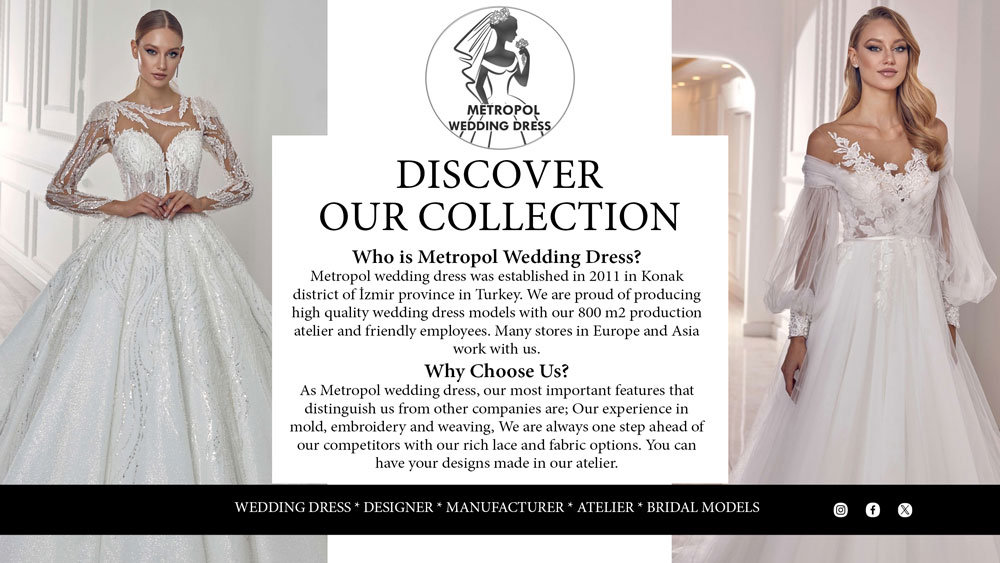
royal wedding dresses for sale
While it’s highly unlikely that the actual royal wedding dresses worn by members of royal families would be available for sale, you can find wedding dresses inspired by royal designs. Many bridal designers and boutiques create dresses that draw inspiration from iconic royal bridal gowns, incorporating similar styles, fabrics, and details.
If you’re interested in purchasing a wedding dress inspired by a royal design, you can explore bridal shops and online retailers that offer collections inspired by famous royal weddings. These dresses often capture the essence of royal elegance and sophistication while being more accessible to brides-to-be.
When searching for royal-inspired wedding dresses, consider using keywords like “royal wedding dress replicas,” “royal-inspired bridal gowns,” or “princess-style wedding dresses” to find retailers and designers specializing in this style. Additionally, browsing through bridal magazines, websites, and social media platforms can provide inspiration and help you discover designers who offer royal-inspired wedding dresses for sale.
How many dresses do most brides try on
The number of wedding dresses that most brides try on can vary widely depending on individual preferences, circumstances, and the availability of dresses at bridal boutiques. Some brides may try on only a handful of dresses before finding “the one,” while others may try on dozens of dresses before making a decision. Here are a few factors that can influence the number of dresses a bride tries on:
Personal Preference: Some brides have a clear idea of what they want in a wedding dress and may only try on a few dresses before finding the perfect one. Others may enjoy the process of trying on different styles and may try on more dresses to explore their options.
Bridal Boutique Policies: Some bridal boutiques may have policies or time limits in place for dress appointments, which can influence the number of dresses a bride tries on during a single visit. Brides may choose to schedule multiple appointments at different boutiques to see a wider range of dresses.
Budget: Budget constraints can also impact the number of dresses a bride tries on. Brides with limited budgets may focus on trying on dresses within their price range to avoid falling in love with a dress that is outside of their budget. Royal Bridal House
Time Constraints: Brides who are planning their wedding on a tight timeline may have limited time to shop for a dress and may try on fewer dresses as a result. On the other hand, brides with more flexibility in their wedding planning timeline may have the luxury of trying on a greater number of dresses over a longer period.
Feedback from Others: Some brides may bring along friends or family members to help them with the dress shopping process. The opinions and feedback of others can influence the number of dresses a bride tries on, as well as her ultimate decision.
Overall, there is no set number of dresses that most brides try on, as it can vary widely based on individual circumstances and preferences. The most important thing is for the bride to find a dress that makes her feel beautiful, confident, and excited to walk down the aisle on her wedding day.
Whether a bride wears her wedding dress all night or changes into a different outfit during the reception is entirely up to personal preference. Here are some factors to consider when deciding whether to wear the wedding dress all night:
Comfort: Wedding dresses are typically worn for several hours, so comfort is a significant consideration. Some brides may find their wedding dress comfortable enough to wear throughout the entire day and night, while others may prefer to change into a more relaxed outfit for the reception.
Reception Activities: Consider the activities planned for the reception. If your reception includes a lot of dancing or other energetic activities, you may find it more comfortable to change into a lighter, more breathable outfit that allows for ease of movement.
Temperature and Venue: If your wedding is taking place in a warm or humid climate, or if your reception venue is indoors without air conditioning, you may prefer to change into a lighter dress or outfit to stay cool and comfortable.
Second Dress or Outfit: Some brides choose to wear a second dress or outfit specifically for the reception. This can be a fun way to change up your look and have a different outfit for dancing and socializing with guests.
Photography: Consider how your dress will photograph throughout the day and night. If you love the look of your wedding dress and want to capture it in all your photos, you may choose to wear it for the entire event. Alternatively, you can take advantage of the opportunity to wear a different outfit for some unique photo opportunities during the reception.
Ultimately, whether you wear your wedding dress all night or change into a different outfit is a personal decision based on your comfort level, preferences, and the overall vision for your wedding day. There are no hard and fast rules, so choose whatever option feels right for you and allows you to enjoy every moment of your special day.
What is a normal amount to spend on a wedding dress
The amount spent on a wedding dress can vary widely depending on factors such as budget, personal preferences, geographical location, and the overall cost of the wedding. There is no one-size-fits-all answer, but here are some general guidelines to consider:
Average Cost: In the United States, the average cost of a wedding dress ranges from around $1,000 to $2,500, with some brides spending more and others spending less. However, it’s important to note that wedding dress prices can vary significantly based on factors such as designer, fabric, embellishments, and customization options.
Budget: When setting a budget for your wedding dress, consider how it fits into your overall wedding budget and prioritize your spending accordingly. Determine how much you are comfortable spending on the dress while still allowing for other expenses such as venue, catering, photography, and decor.
Additional Costs: Keep in mind that the cost of the wedding dress is not the only expense to consider. You may also need to budget for alterations, accessories (such as shoes, veil, jewelry, and undergarments), and preservation/storage of the dress after the wedding.
Quality vs. Price: While it’s important to stay within your budget, it’s also worth considering the quality and craftsmanship of the dress. A higher-priced dress may be made with better materials, construction, and attention to detail, which can affect how it looks and feels on your wedding day.
Sales and Discounts: Many bridal boutiques offer sales, trunk shows, and sample sales where you can find wedding dresses at discounted prices. Keep an eye out for these opportunities to potentially save money on your dress.
Customization: If you have your heart set on a specific style or designer dress but it’s out of your price range, consider options for customization or ordering a less expensive version of the dress without some of the embellishments or customization options.
Ultimately, the amount you spend on your wedding dress is a personal decision based on your individual circumstances and priorities. Focus on finding a dress that makes you feel beautiful, confident, and comfortable on your special day, regardless of its price tag.


